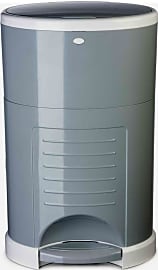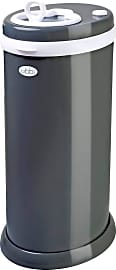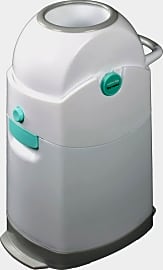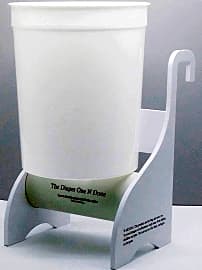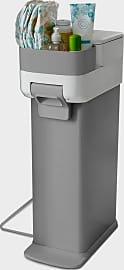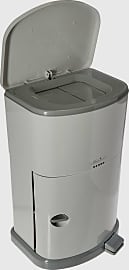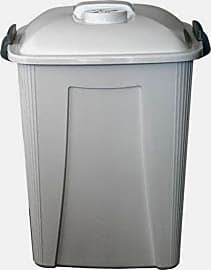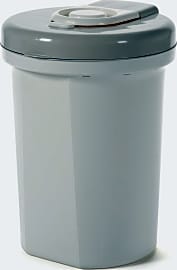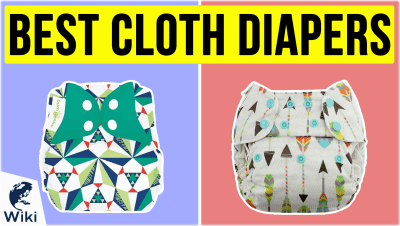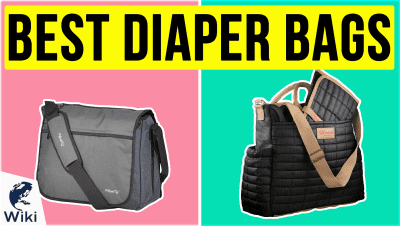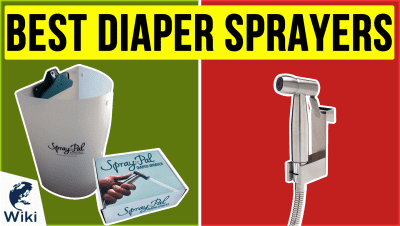The 10 Best Diaper Pails

This wiki has been updated 41 times since it was first published in April of 2015. When you pictured becoming a parent, did you ever imagine that such an unholy smell could emanate from such a cherubic-looking baby? Probably not. Babies don't always leave us with plenty of time to take out the trash, so keep those odors safely locked away in a diaper pail. We've included options for parents who use cloth or disposable diapers, and some even come in a variety of colors. When users buy our independently chosen editorial picks, we may earn commissions to help fund the Wiki.
Editor's Notes
April 03, 2020:
When choosing the best diaper pail for your family, there are a couple of basic things to keep in mind. You'll want to consider the type of diapers you plan to be using, between cloth or disposable, how often you want to be emptying the unit, and whether you prefer odor control or style to be your top priority.
While many pails could serve cloth or disposable diapering needs, the Busch Systems Odorless takes into account the unique needs of cloth diapering. The wide opening can even accept the bulkiest all-in-ones, and the carbon filter in the top still allows for some air flow into the pail, instead of sealing it off completely, without air the cloth diapers are more likely to develop mold or bacteria growth.
If you're the type to put off emptying the pail as long as possible, then cloth diapering probably isn't for you, and you'll want to stick with a choice that really seals in the smells with an odor controlling bag, like the Playtex Diaper Genie Complete, or the Munchkin Step.
The Munchkin Step stays in the top spot because it excels at odor control. A lot of pails keep the smell out of the room most of the time, but parents might need to endure a brief whiff of poo every time they put in another. If you're extremely sensitive to smells, the Munchkin's bag automatically twists every time you close the lid, sealing out odors for the next changing. Plus its white with chrome trim is a neutral look that will probably just blend into the background of most nurseries.
If your baby's room is decorated to the hilt, the Ubbi Steel is widely considered the most stylish choice. There's a wide range of vibrant and pastel colors and it's one of the few pails that is made out of steel for those who consider plastic an eyesore. It can't match the Munchkin on odor control, but the Ubbi is well-sealed when not in use with a small sliding hole in the lid to help you minimize any escaping smells.
Also in this year's update, we needed to remove the Baby Trend Champ Deluxe because it's no longer available, and replaced it with the Skip Hop Dual Air Lock. Like it's name suggests, this option solves the stink issue by having a separate compartment to place the diaper in, and only when the top is closed will the inner door drop the diaper to the bin below.
Avoiding An Odorous Situation: Choosing A Diaper Pail
Other options may offer less capacity, but are also slightly smaller and more inconspicuous, perfect for tucking away in the corner of a room.
You want your child to be clean, comfortable, and healthy, and keeping them in fresh diapers is one of the many facets involved in doing so. However once the diaper has been removed, its disposal can become something of an issue.
Walking diapers to an outdoor garbage pail or dumpster is also always an option, but this can prove hassling when you live in an apartment or a large home, especially when your child is young and requires multiple diapers each day.
A diaper pail is the best way to manage this dilemma. The first thing you need to consider when searching for the right unit is simply capacity. Some pails can hold as many as forty infant-sized diapers at once and thus are a great choice for use during the first months of a child's life. Other options may offer less capacity, but are also slightly smaller and more inconspicuous, perfect for tucking away in the corner of a room.
Certain diaper pails have built-in bagging systems that automatically seal the diapers into bags once they've been placed into the diaper pail. These systems are great for odor and mess control, but they also necessitate the repeated purchase of bag refills in order to work properly. This adds expense beyond the initial purchase price of the pail.
Also note that many of these types of diaper pails have rather narrow, tight openings. These help keep odors sealed inside and are a fine choice for use with the smaller diapers of the younger child, but as a child grows, so too does the size both of their diaper and the material they eliminate. At some point, chances are good that your toddler will be using diapers too large to squeeze down into a diaper pail with a diminutive opening. Consider a pail with a wider mouth from the beginning, or know that your routine will have to change at some point.
Diaper pails that can accommodate odor masking materials like baking soda or air fresheners can help to limit the foul odors that escape the diaper pail, but a unit with a securely locking lid backed up by rubber seals is often an even better choice: the odors that can't escape the pail in the first place don't have to be masked, after all.
Other Accessories For Diaper Disposal
The best way to reduce the odor created by diapers in general is to bag each and every individual diaper you throw away, even if it is going into a diaper pail complete with its own bagging system. This may seem like an unnecessary expense to the already pricey process of parenting, but it's the only way to create an almost odor-free home short of disposing of all diapers outside.
And yes, the bags provide almost the exact same function and the same level of odor control.
You can save money by thinking outside the box: while a few dozen bags marketed for disposal of diapers can cost around ten dollars, you can also get one thousand dog waste disposal bags for about fifteen dollars. And yes, the bags provide almost the exact same function and the same level of odor control.
Once the diaper pail bag has reached capacity, remove and replace the bag outside if possible. This will be the single most pungent part of the diaper pail maintenance process, and handling it outside is always advisable.
Make sure you give your diaper pail a fighting chance at fighting odors by giving the unit some allies. Compact charcoal air purifier packs, for example, can be tucked down into the diaper pail itself and can help to capture much of the pungent aroma that would otherwise escape. And if you're willing to spend the cash, a plug in electronic air purifier placed near a diaper pail can almost ensure that a room stays odor free.
It never hurts to keep the air moving in any room where diapers will be disposed of, keeping the room closed off as little as possible. In fact, if your home can accommodate it, don't leave the diaper pail in the same room as your child's crib. Instead, leave it in the hall outside the room or in some other area where airflow is readily available.
What To Expect When Diapering
Babies go through a lot of diapers. In the first several weeks off life, the average newborn baby will require between 10 and 15 diapers every day. That means easily using as many as 400 diapers in the newborn size and, once you have the diapering process mastered (it will take you about three minutes on average), spending up to 20 hours changing diapers in that first month.
Do the math, and you will see that your child will easily require as many as 2,000 diapers changed and disposed of in his or her first year of life alone.
Kids between the ages of one month to five or six months use seven to ten diapers daily on average, so you can still count on lots of diapers changed and an extensive amount of time spent at the activity when kids are this old.
By the time a child is nine months old to one year in age, the number of diapers can drop to five per day, give or take a few. Do the math, and you will see that your child will easily require as many as 2,000 diapers changed and disposed of in his or her first year of life alone. Parenting is hard enough, but disposing of soiled diapers doesn't have to be.
And for the record, most children do not fully potty train until sometime after their third birthday.


